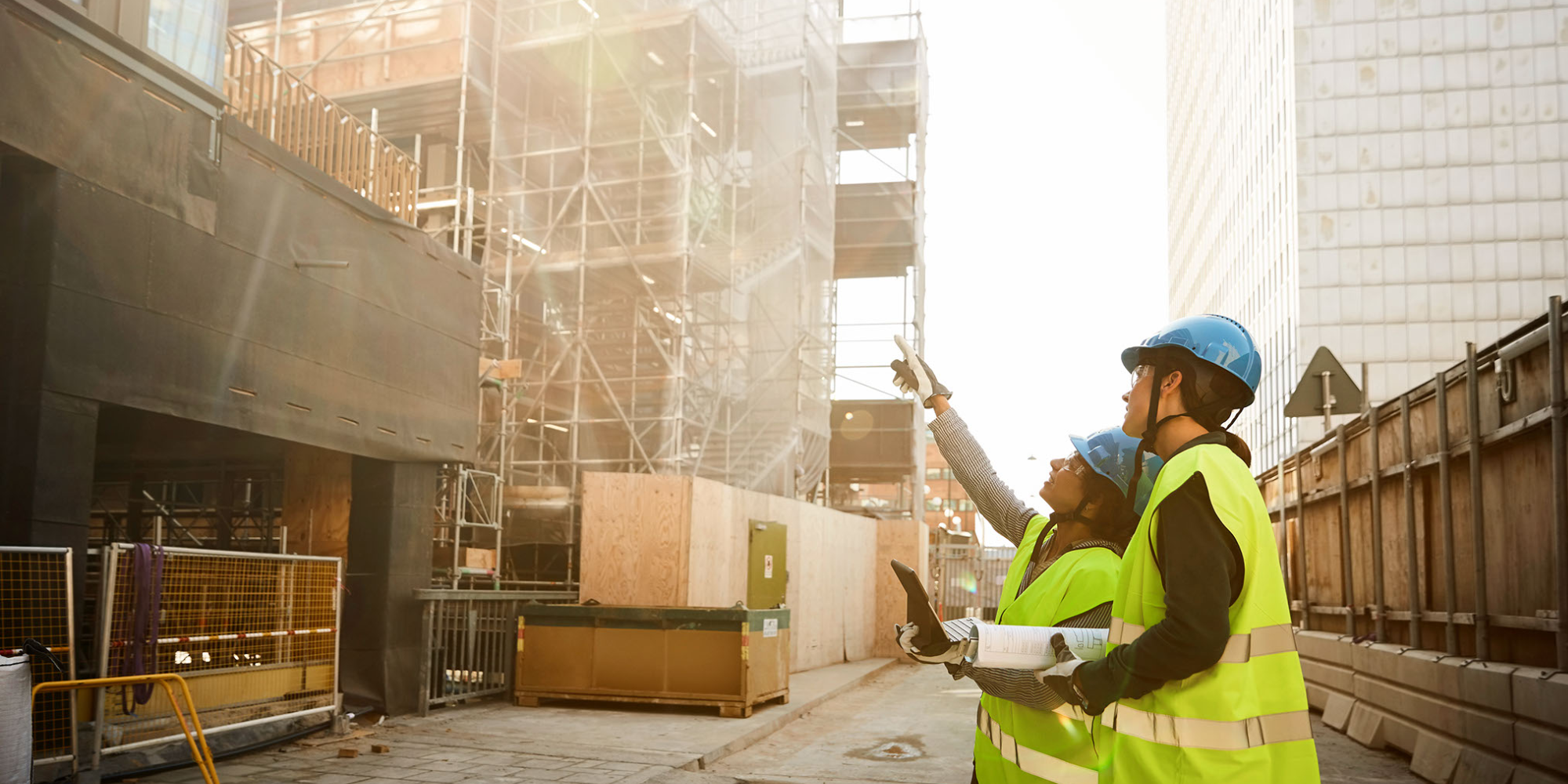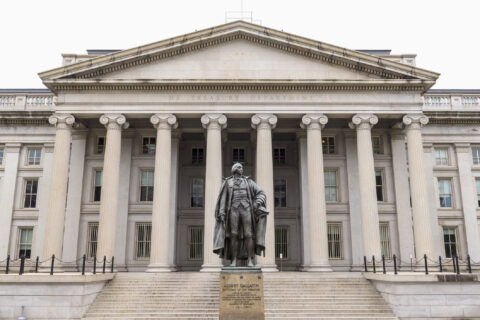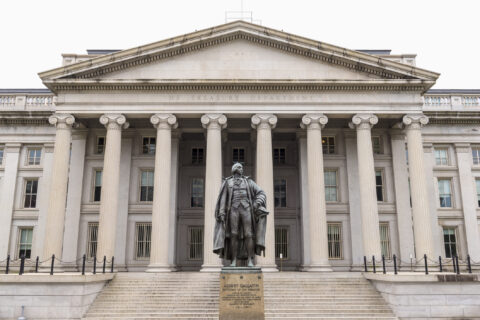As people around the world look to secure a COVID-19 vaccination to achieve a sense of physical security, Congress and the Biden-Harris Administration are preparing to follow the emergency relief of the American Rescue Plan with an economic Recovery Plan to restore economic security to our nation. Today, the National League of Cities (NLC) released seven key goals for Congress and the Administration to work together with cities, towns and villages on as they advance this next critical step of legislation.
Cities are Ready to Rebuild
The nation’s cities, towns and villages look forward to working with Congress and the Administration in the coming months on a bipartisan recovery package that invests in the infrastructure, workforce, and the economic rebuilding our nation needs. Communities across the country are ready to partner with Congress and the Administration to rebuild our critical connections – both physically and virtually. Even before the COVID-19 pandemic, our nation was facing a skills shortage within all infrastructure sectors and behind in tackling the infrastructure backlog of overdue maintenance projects. With approximately seven million jobs that may not return to the labor market after the COVID-19 pandemic, we must ensure we have a prepared workforce ready to build and modernize the roads, bridges, waterways and broadband systems that connect and fortify our communities.
Cities’ Message to Congress
Congress can partner directly with local governments – the most trusted level of government – who are also best positioned to select and complete the projects that matter most to the communities we serve together. The future of infrastructure must be both participatory and accountable, prioritizing investments in communities that have been left behind in order to address equity and affordability in areas negatively impacted from past policies and underinvestment. The time for maintaining the status quo on infrastructure policies and processes is behind us. Together, local governments, Congress and the Administration can address our nation’s infrastructure challenges and chart a path to economic recovery by emphasizing the following priorities:
1. Rebuild Transportation Connectivity
America’s cities are leading the way on sustainable, equitable, and innovative transportation infrastructure across the country. Local governments own and manage 80 percent of the nation’s urban, suburban, and rural roads and have invested substantial local resources in regional connectivity and safety. Without federal support, infrastructure demands outpace local lines of credit and revenue options. To rebound after the pandemic, cities see opportunities to rebuild while traffic has eased, invest in the local freight network carrying deliveries to urban and rural doorsteps, and continue to use technology to enhance the reliability of our existing system. Local governments and our transportation partners are ready, willing and capable to rebuild if Congress will partner with them on their region’s infrastructure must-do list.
- Increase local access to the Surface Transportation Block Grant (STBG) program which is the primary transportation formula funding used by our metropolitan planning organizations (MPO) to meet project needs for communities of all sizes in the region. Congress allocates a portion of STBG for the states to spend on small communities’ needs, but small towns lack consistent input into the use of their STBG funds. Increasing and modifying this flexible transportation program substantially would improve the connectivity and clear outcomes across the nation.
- Ensure communities of all sizes can be partners in all transportation safety and technology programs to build cohesive connectivity between core systems and the majority of the nation’s roads, bridges, rails, and trails. Additionally, Congress should consider increasing grant programs that cover large investments for safety like rail grade separations, off-system bridges, and signal updates that come at significant costs for communities but ensure safe connectivity and efficiency in the region.
- Allow local governments to contribute solutions to the most pressing challenges in transportation such as testing new funding models and building sustainable transportation options. Congress should make regions eligible for funding and electrification pilots and increasing programs for innovative, sustainable, and resilient transportation, including the existing transportation alternatives and mobility investments to reduce emissions and congestion.
2. Support Investments in Water Infrastructure
Local governments provide over 95 percent of the total funding for U.S. water infrastructure. With the nation’s growing water infrastructure needs, it is evident that our country must make substantial investments to repair and replace our nation’s aging water delivery and treatment systems. Moreover, local governments recognize the threat posed to our nation’s health and safety as it faces the impacts of climate change, the ongoing coronavirus pandemic and longstanding equity and affordability issues. Local governments are committed to ensuring all residents and businesses have access to clean and safe water to maintain public health. This, however, has come at a high cost to utilities, which are overwhelmingly funded by local ratepayers, and are now facing a significant drop in revenue essential to providing water service, continuing operations and making capital investments. We hope to work with Congress to:
- Continue programs such as the Clean Water and Drinking Water State Revolving Funds and WIFIA, which provide critical financing for water infrastructure projects. Additional support should be provided to local governments in the form of grants for drinking water, wastewater and stormwater management and programs that support resilience, innovative technologies, workforce development and watershed/source water protection, among others. (S. 914, H.R. 1915)
- Enhance water affordability for our residents by partnering with their state and the federal government to meet their water infrastructure needs in a manner that does not financially burden our citizens. We encourage Congress to also provide additional flexibility and tools to communities who are facing substantial drinking water, wastewater and stormwater burdens, including by modernizing the National Pollutant Discharge Elimination System permitting process to allow states with delegated authority the ability to issue a permit to a municipality of up to ten years. (H.R. 1881)
- Add water and sewerage facilities to the list of private activity bonds that are not subject to the volume cap to maintain tax-exempt status.
3. Support Broadband Access for All Communities
Too many American households and businesses remain cut off from reliable internet access, either because of a lack of infrastructure or because of outdated, inequitably distributed, or unaffordable options. Local governments have led the way throughout the pandemic in measuring access gaps in their communities and seeking emergency solutions, such as mobile hotspots and public wi-fi access points in parks. As we recover and rebuild, Congress must invest in sustainable locally-led solutions to close the digital divide in rural, suburban, and urban communities. This includes:
- Supporting funding and financing for public and private broadband infrastructure through Federal Communications Commission and U.S. Department of Agriculture broadband programs, as well as a new Broadband Infrastructure and Finance Innovation Program.
- Rolling back federal and state limitations on local broadband leadership, including state limits on community broadband networks, and federal limits on cable franchise agreements and restrictions on local management of wireless infrastructure on municipal property.
- Supporting funding for digital inclusion grants to allow states, local governments, and nonprofits to provide assistance in applying for subsidized connections, technical skills training, and access to free or low-cost computers.
- Funding and making permanent a broadband subsidy for low-income households, similar to the Emergency Broadband Benefit created in response to the COVID-19 pandemic.
- Increasing flexibility in the E-Rate program, to allow anchor institutions like schools, libraries, and community centers to serve as connectivity springboards for their surrounding communities.
- Modernizing broadband measurement and data collection systems by directing the Federal Communications Commission to not only collect more geographically precise information about broadband access and infrastructure, but also to collect and make publicly available information about broadband subscription costs, network performance, and reliability.
4. Build Community Resilience
Last year, communities simultaneously faced a record number of climate-related disasters, such as wildfires, extreme heat, and hurricanes, which further increased fiscal pressure on local governments, residents, and businesses. Local governments are first responders on the front lines of delivering services and protecting residents. While cities are prepared to forge ahead on these initiatives and actions, we urge the federal government to be a partner in these efforts in order to ensure the long-term strength of our economy and build resilient communities by:
- Supporting clean energy investment through the Energy Efficiency and Conservation Block Grant to help communities across the country jumpstart and expand efforts and programs to improve energy efficiency, increase energy conservation and deploy renewable energy systems. (H.R. 425)
- Passing a national renewable portfolio standard that increases the use of carbon neutral energy and promotes energy efficiency, with the goal of producing 50 percent carbon neutral energy by 2030 and 100 percent by 2050.
- Requiring consideration of climate-related risks and vulnerabilities as part of all federal policies, practices, investments, regulatory and other programs.
- Offering incentives for acquisition of zero- or low- emission vehicles of various types for public transportation and municipal fleets, as well as providing resources to plan and install electric vehicle charging infrastructure in alignment with local trips and transportation and energy plans.
- Promoting and supporting improvements to the electrical grid, including capabilities and incentives for smart metering, support for large scale distributed generation, and construction of long-distance renewable energy transmission capabilities.
5. Enhance Parks, Neighborhoods and Housing
Targeted investments in parks, recreation, housing, and other neighborhood amenities should be coordinated alongside infrastructure improvements. Parks, natural areas and green infrastructure provide a multitude of neighborhood benefits, including stormwater management, providing recreation opportunities, extending the life of local infrastructure, saving local governments and taxpayers money, positive impacts on public health, and community resilience and well-being. Housing stability is a prerequisite for economic mobility, job security and health and well-being. These investments make a community a great place to live, work and play. America’s parks have never been more in demand than they are during the pandemic, making inequities in access to outdoor spaces more acute. We encourage Congress to:
- Support the Outdoors for All Act to codify and establish a dedicated funding source for the Outdoor Recreation Legacy Partnership program, a competitive grant funded through Land and Water Conservation Fund that helps communities create and improve parks and other outdoor recreation areas to improve public access, particularly in disadvantaged or low-income communities.
- Create a 21st Century Conservation Corps to scale the existing network of Service and Conservation Corps and other organizations to engage young adults and recent veterans in conservation, resource management and sustainable infrastructure jobs. (S. 487/H.R.1162)
- Support coordinated funding for housing construction, rehabilitation, and demolition to improve opportunities for low-wage workers and stop neighborhood decline, such as the Restoring Communities Left Behind Act.
- Authorize and fully fund the Interagency Partnership for Sustainable Communities formed by the U.S. Department of Housing and Urban Development, the U.S. Department of Transportation and the U.S. Environmental Protection Agency to provide direct assistance to local and regional governments to coordinate housing, community development, transportation, energy and environmental policies.
6. Invest in Workforce and Skills Development
The COVID-19 pandemic has had an inequitable impact on workers, especially those without an education past high school, workers of color, and women. In addition to creating jobs, a successful infrastructure and economic development package will invest in training and pathways to employment that ensure local workers who are unemployed or seeking upgraded employment can successfully secure these critical jobs. Congress can enable infrastructure investments that will increase local employment, business contracts and overall investment in the economy by ensuring investment meets the current demand. To ensure the workers in our communities can support our nation’s economic recovery, Congress must:
- Support a $15 billion investment in immediate capacity for our public workforce system, workforce development boards, community college/career and technical and adult education systems to respond to historic worker and business needs through the Relaunching America’s Workforce Act. (H.R. 6646/S. 3659).
- Support a $35 billion investment to provide workers, especially those who have historically faced barriers and those most affected by the pandemic, with the pathways and support needed to access good-paying infrastructure, manufacturing, and clean energy jobs.
- Meet the national training needs and support $50 billion for training for workers who are unemployed, underemployed, or most at risk for losing their jobs to reskill and upskill for new careers of the 21st century.
- Eliminate the local/targeted hire prohibition and create clear guidance for federal grant recipients interested in using local/targeted hire to boost investments in local workers and businesses.
7. Update Local Infrastructure Financing Tools
Municipal bonds finance three-quarters of the total U.S. investment in infrastructure, and over the past decade, $3.8 trillion in municipal bonds were used to address the most pressing infrastructure needs. This is estimated to save taxpayers an average of 20 to 25 percent on interest costs with tax-exempt municipal bonds as compared to taxable bonds. To ensure stable funding sources for the infrastructure investments our communities need, Congress must:
- Fully restore the advance refunding of bonds for local governments. The 2017 Tax Cuts and Jobs Act took away the ability to advance refund bonds away from localities, but interest rates are now at record low levels creating a climate that is perfect for refinancing municipal debt and reducing local governments’ interest costs. Restoring this advanced refunding will allow local governments to refinance and use the savings on more needed infrastructure projects.
- Modernize the small borrower issuer exemption, or bank qualified debt. Smaller communities typically do not have the ability or resources to do a full underwriting with an investment bank, and they typically look to community or regional banks to purchase debt. The current $10 million exemption cap set in 1986 needs to be updated for today’s infrastructure costs and adjusted up to$30 million to support small towns and villages using local banking.
Join NLC in Sharing These Goals with Congress
Tell your Representative that you and NLC are ready to partner with them to address our nation’s infrastructure challenges and chart a path to economic recovery.










